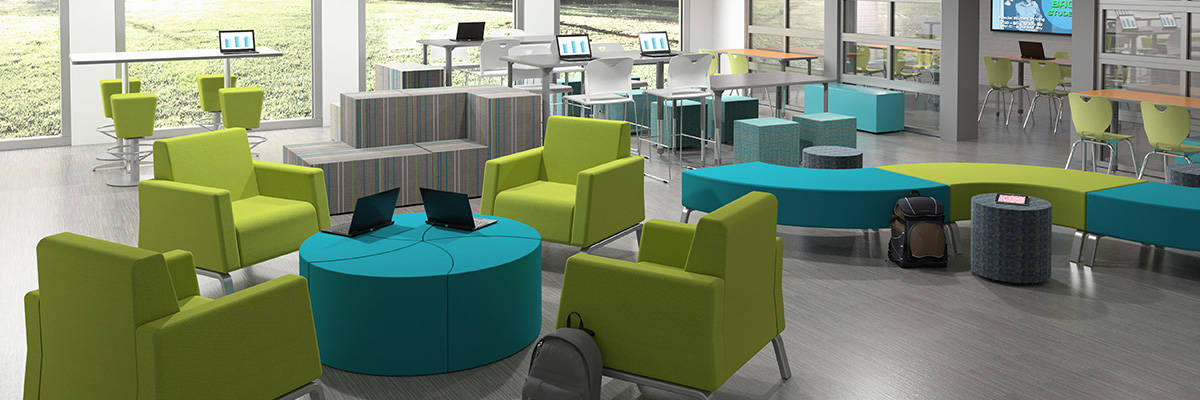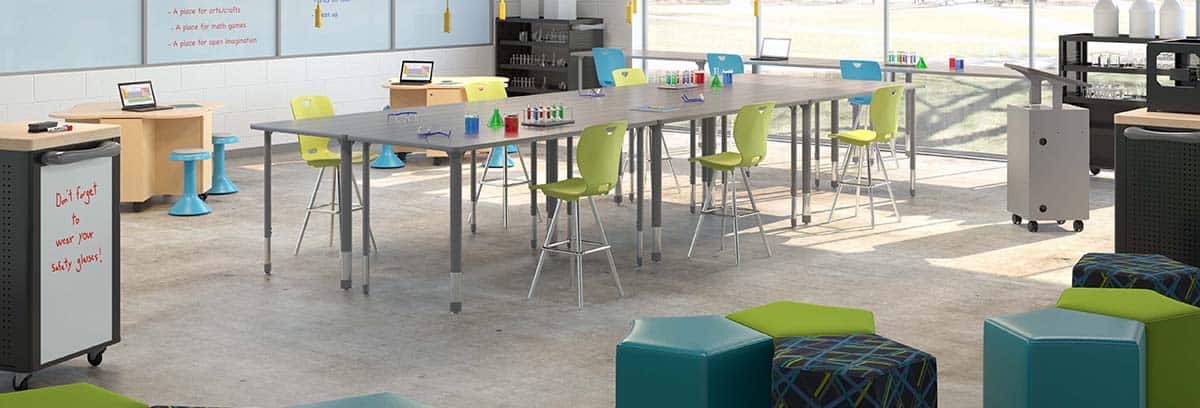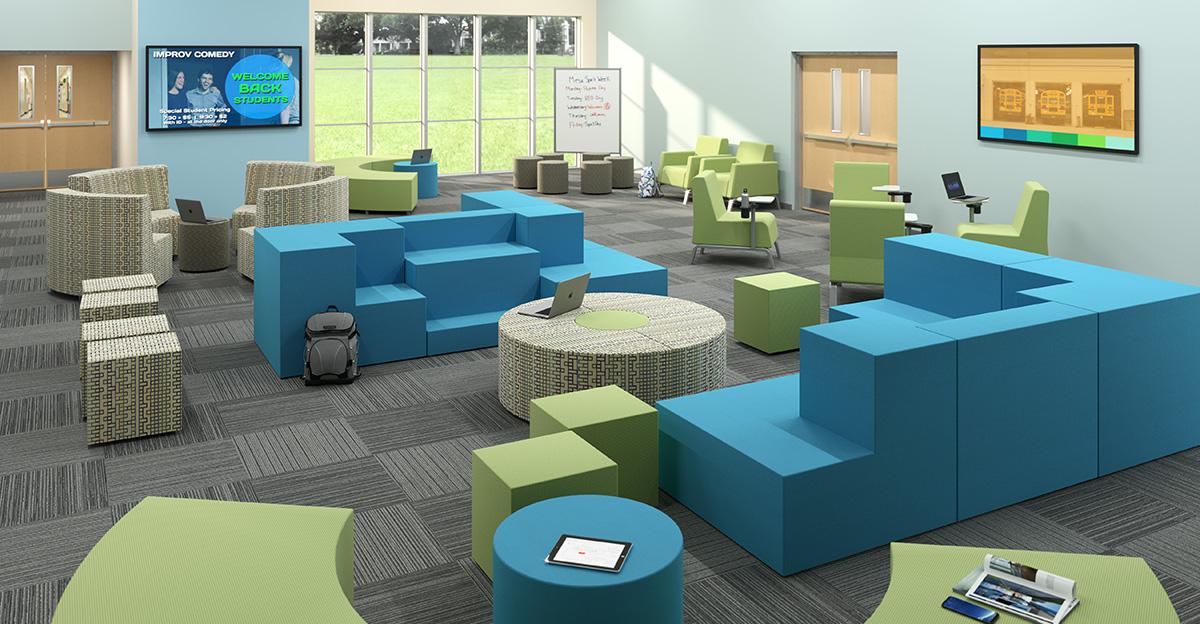The design of a learning environment directly affects the type of instruction that occurs in that space,
as numerous studies have demonstrated. In fact, instructional design and learning space design go
hand in hand, working together to support student achievement. Just as it is critical for K-12 leaders to
develop a strategic vision for what instruction should look like to produce the desired learning outcomes,
it’s equally important to create a unified vision around learning space design.

Classrooms, common areas, media centers, and other learning spaces should be designed strategically to support the educational vision a school system has and its portrait of a graduate. The type of furniture, technology, and equipment used in these spaces plays a key role in enabling the learning strategies, activities, and culture that the district is looking to promote.
Imagine a school building filled with engaging, dynamic learning environments that encourage and support a wide variety of instructional styles and strategies, while also allowing for future evolutions in curriculum and instruction. That is the model that school systems should strive for. To achieve this model, many districts are choosing to standardize their learning environments.
Standardizing doesn’t mean adopting the same look and layout for every building or classroom. Instead, it means creating an overarching vision that defines the aesthetic and functionality that each learning space should exhibit—and then developing a menu of furniture options that can bring this vision to life.
Why would a district want to create a standard vision for its learning environments? Here are four core reasons.
1. ACHIEVE EQUITY FOR STUDENTS AND TEACHERS
COVID shined a bright light on inequities in our schools and society. With the lessons learned during the pandemic in mind, a growing number of K-12 leaders are making policy decisions through a lens of equity and inclusion.
Creating a single, standard model for learning space design district-wide ensures that all students have the same opportunities to learn in classrooms that are fully equipped to support the district’s vision for instruction—regardless of who their teacher is or where they attend school in the district. It also ensures that every teacher has the same opportunity to teach in a classroom that is designed with success in mind.

2. SUPPORT EFFECTIVE INSTRUCTION
With an established standard for learning space design, PK-12 leaders can ensure that every environment where learning takes place is furnished and equipped to support effective, research-based instruction. In other words, everything from the desks, tables, and chairs to the storage, shelving, and technology has been carefully chosen to facilitate the kinds of activities that students and teachers might engage in to produce the optimum learning outcomes.
If a district’s instructional vision is to foster active and collaborate learning, for instance, the tables and chairs might be chosen with maximum flexibility and mobility in mind so they can easily be moved around the room and configured in various group sizes for collaborative group work.
3. STREAMLINE THE DESIGN AND FURNISHING OF LEARNING SPACES
Without formal guidelines for principals, teachers, or curriculum directors to follow, the classroom design and procurement process can often be unwieldy. Establishing a district-wide standard makes this process much simpler for everyone involved.
With a formal standard in place, district-level leaders can create an online “catalog” of furniture and equipment that fits the vision they are hoping to achieve. School leaders can choose from this catalog to equip their learning spaces in a way that maintains the character of their individual facilities, while ensuring that their choices fit within the budget and instructional design framework (and budget) that the district has established.

Having an online catalog speeds up the design and procurement process whenever there is a new school construction or renovation project within the district, while controlling the cost of furnishings. What’s more, standardization allows for the movement of furnishings between buildings to support gains or declines in enrollment or programming as needed.
4. MAINTAIN HIGH QUALITY
Establishing a district-wide standard for learning space design ensures that each facility receives the same high quality of furnishings and equipment. It allows for the leadership at each school to select the furniture that best meets their local needs while also maintaining consistency so that key district standards are always met: quality, safety, longevity, sustainability, value, and—most importantly—educational experience.
A TRUSTED PARTNER CAN HELP
While school systems can certainly create their own strategic vision for learning space design, partnering with a trusted service provider offers the opportunity for expert insight that district leaders might not have.
Through a new service called School Specialty® Innovate360™, we can help districts create a customized vision for learning space design that meets their unique needs and curate a selection of furniture and equipment that will establish a district-wide standard. To learn more, contact your School Specialty® Representative.
Dr. Sue Ann Highland
Sue Ann Highland, PhD, is the National Education Strategist for School Specialty. She has more than 25 years of experience as an educator, administrator, and consultant with school systems across the United States, with broad expertise in designing and creating highly effective learning environments.
Read more by Dr. Sue Ann Highland–>







Leave a Reply